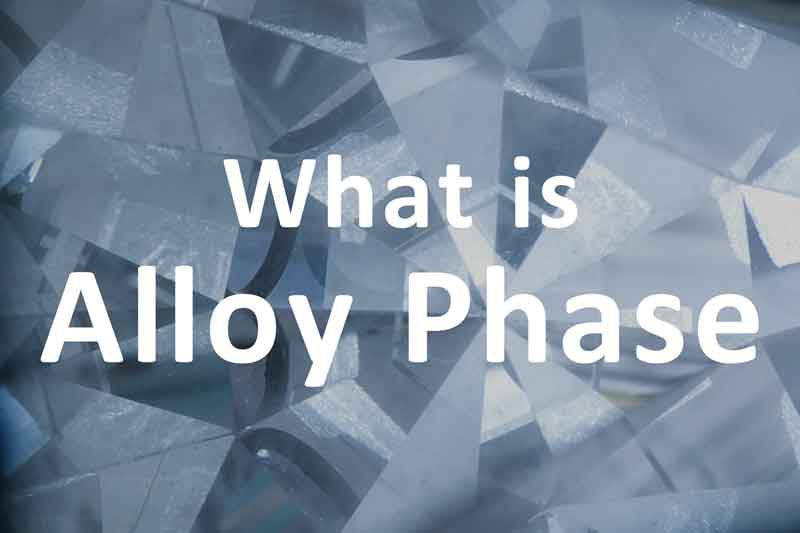Overview
Metallurgy refers to the process of mixing metals and making alloys. Among them, powder metallurgy is a special metallurgical process. It is quite different from the traditional smelting process. Some special alloys need to use this metallurgical method to obtain better performance than ordinary alloys.
In this article, we will introduce the role of powder metallurgy and its process flow in detail. I believe that you will have a deeper understanding of this process after reading it.
What is Powder Metallurgy?
Powder metallurgy is the process of mixing different metal powders and making them into alloys. To give you a basic idea, let's first introduce the general smelting process.
Generally speaking, to mix different metals, you can only heat them and melt them into liquid. Then the mixed liquid metal is solidified into an alloy. This process is called smelting.
Powder metallurgy is completely different. It does not require heating the metal into liquid. We only need to fully mix different metal powders and use processes such as extrusion to make the mixed metals form alloys of various shapes.
You may wonder: smelting is obviously a more convenient and very reasonable metallurgical method, so why do we still use powder metallurgy? Next, let's introduce the advantages of powder metallurgy process.
Why do We Need Powder Metallurgy?
The smelting process has many advantages, such as low cost, large output, simple process, etc. However, it also has its shortcomings.
First, the grains will gradually grow during the solidification process of smelting, which will have a certain impact on the performance of the alloy.
Secondly, the liquid has fluidity. Therefore, there may be segregation of elements during the solidification process, that is, the composition of the alloy is uneven.
Finally, the smelted alloy can often only be made into simple shapes through deformation processes.
Powder metallurgy can ensure the fineness of the grains. At the same time, since the powder is solid, segregation will no longer occur after mixing evenly. Finally, powder metallurgy can achieve complex shapes through various molds.
Of course, powder metallurgy also has its disadvantages. For example, it is not produced through a deformation process, so there will be no work hardening, which makes its performance relatively fixed and there is no room for customization. Therefore, in the actual production process, different alloying processes should be adopted according to different material requirements.
The Process of Powder Metallurgy.
There are three main processes in powder metallurgy, namely: pretreatment, molding and sintering.
Pretreatment
The first step of powder metallurgy is pretreatment. In this step, various metal powders need to be purified.
Many inclusions will appear in the preparation process of metal powders. Such as: ceramics, rubber, fiber or other metals. These inclusions are impurities, which will greatly affect the purity of the finished alloy, thus causing irreversible effects on the performance. Therefore, before powder metallurgy, the inclusions in these powders must be removed first.
There are two main steps to remove inclusions. The first step is to remove impurities with larger particle sizes by screening. The second step is to remove non-metallic inclusions by using different conductive properties.
Molding
After removing the impurities of the metal powder, the metal powder can be mixed in different proportions according to different grades. Next, the mixed powder needs to be made into different shapes. This process is called molding.
In the molding process, the most important thing is the mold first. Different molds determine the final shape of the alloy.
During molding, the powder is first poured into the mold. Then, the powder is compacted in the mold with pressure. At this point, the alloy is made into the shape of the mold.
Sintering
The last step of powder metallurgy is sintering. In the previous step, the alloy has been pressed into a specific shape. But at this time, it is still in a very loose state. Since the powders are not really combined together, the alloy is extremely easy to fall apart. Sintering is the process of making the alloy truly fused at the microscopic level.
Sintering requires the formed alloy to be placed in a vacuum or protective gas environment and then heated. This process is very similar to bright annealing.
Heating in a vacuum is to prevent the alloy from reacting with oxygen at high temperatures. Heating is to allow the metal atoms in the alloy to truly combine at high temperatures. Unlike smelting, the sintering temperature is lower, so the metal will not be melted into a liquid state.
After sintering, the alloy has a strong structure, uniform composition and stable properties at the same time.
FAQ
How to determine whether to use smelting or powder metallurgy?
This depends on the material selection and performance requirements. For most nickel-based alloys, smelting is generally used because nickel-based alloys sometimes require coarser grains at high temperatures. However, for some cobalt-based alloys, such as Satellite alloy, powder metallurgy can refine the grains well and improve performance.
In addition, for the same alloy, powder metallurgy or casting can be selected according to different requirements.
Can powder metallurgy be heat treated?
The alloy after powder metallurgy has reached a balanced performance. Therefore, it is generally not heat treated. Even if heat treated, its performance will not be improved.
Further Reading


Conclusion
Powder metallurgy is a special alloying process. It is the process of mixing different metal powders and making alloys. Compared with ordinary smelting, the alloys made by powder metallurgy have finer grains, more uniform composition and more complex shapes.
Powder metallurgy requires removing impurities from the powder before pressing it into a mold. Finally, the sintering process gives the alloy a strong internal structure.
We produce various Satellite alloys through powder metallurgy. Please contact us for any needs.

